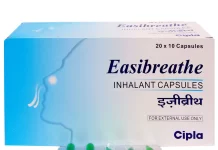Naltrexone is a medication used to help individuals overcome addiction to opioids or alcohol. Here’s information about its uses, benefits, common symptoms, and potential side effects: Naltrexone Tablet Uses Benefits and Symptoms Side Effects

Uses and Benefits of Naltrexone:
- Opioid Addiction Treatment: Naltrexone is used as part of medication-assisted treatment for individuals with opioid addiction. It works by blocking the effects of opioids, reducing cravings, and preventing the euphoric effects if the individual uses opioids.
- Alcohol Dependence Treatment: Naltrexone can also be used to support the treatment of alcohol dependence. It reduces the craving for alcohol and can help individuals maintain abstinence.
Common Symptoms and Side Effects of Naltrexone:
- Opioid Withdrawal: Naltrexone should only be used after an individual has gone through a detoxification period and is no longer physically dependent on opioids. If naltrexone is taken while opioids are still in the system, it can precipitate withdrawal symptoms such as sweating, nausea, vomiting, abdominal cramps, and muscle aches.
- Gastrointestinal Symptoms: Naltrexone may cause gastrointestinal side effects such as nausea, vomiting, or diarrhea. These symptoms are typically mild and transient.
- Headache: Headache is a common side effect of naltrexone, although it is usually mild and temporary.
- Liver Effects: Rarely, naltrexone can cause liver injury. Monitoring liver function through blood tests is typically recommended before starting naltrexone and periodically during treatment.
- Allergic Reactions: In rare cases, naltrexone can cause allergic reactions characterized by symptoms such as rash, itching, swelling, or difficulty breathing. Seek immediate medical attention if you experience any signs of an allergic reaction.
- Mood Changes: Some individuals may experience mood changes, including depression or anxiety, while taking naltrexone.
- Injection Site Reactions (Extended-release formulation): If the extended-release injectable form of naltrexone is used, injection site reactions such as pain, swelling, or redness may occur.
It’s important to take
naltrexone as prescribed by your healthcare professional and follow their instructions regarding the dosage and frequency of administration. Inform your healthcare provider about any pre-existing medical conditions, medications, or substances you are taking to ensure the appropriate use of naltrexone.
Naltrexone
should be used as part of a comprehensive treatment program that includes counseling and support to address the underlying addiction. Regular monitoring and follow-up with healthcare professionals are essential for effective management.
If you have any concerns or experience
troubling side effects while taking naltrexone, consult with your healthcare provider for further evaluation and guidance. They can provide personalized advice based on your specific situation and help you in your journey toward recovery from opioid or alcohol addiction.
Naltrexone Tablet Uses Benefits and Symptoms Side Effects Naltrexone Tablet in hindi Naltrexone Tablet in hindi







